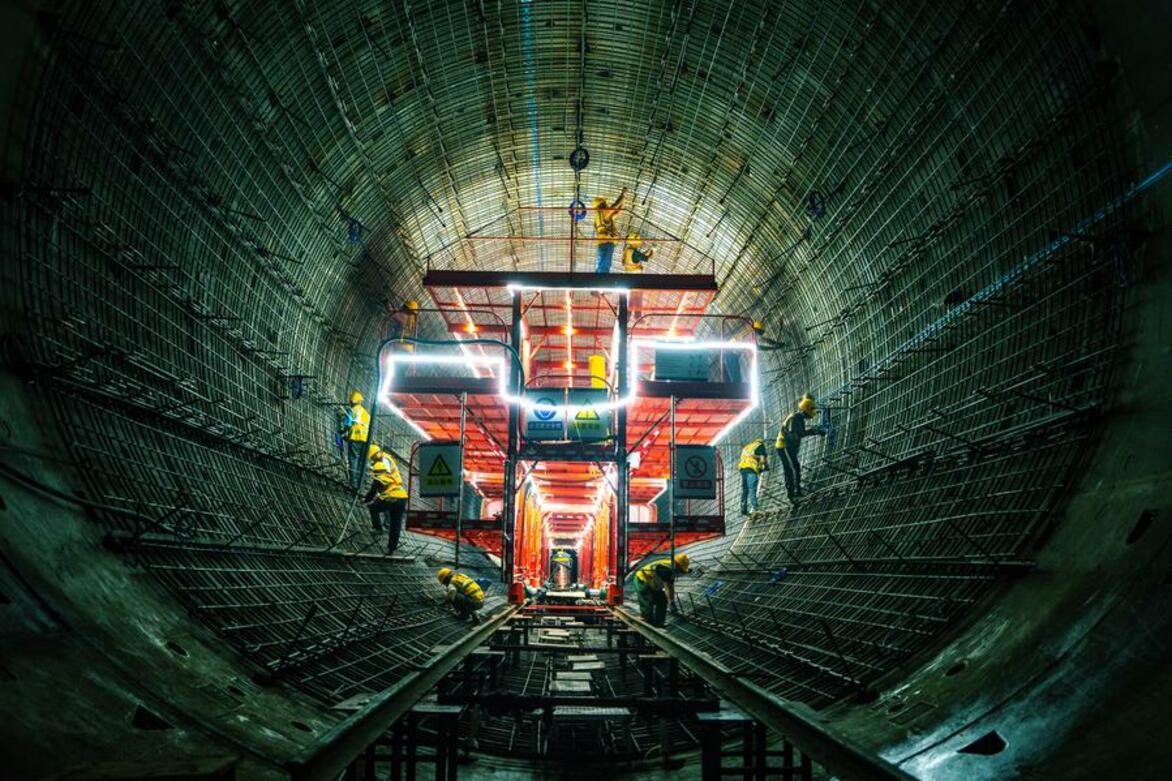Six decades on, mainland water nourishes Hong Kong's growth
Xinhua
03 Apr 2025

This undated file photo shows the construction site of water resources allocation project for Pearl River Delta, where the Dongjiang-Shenzhen Water Supply Project is located. (Xinhua)GUANGZHOU, April 3 (Xinhua) -- In 1963, Hong Kong endured its worst drought in a century, leaving three million residents struggling for water. Six decades later, the once-parched city has bloomed into a vibrant financial hub, a transformation enabled by the Dongjiang-Shenzhen Water Supply Project.Breaking ground in 1964 and completed in just one year, the project diverts water from the Dongjiang River, which originates from east China's Jiangxi Province and flows to the Pearl River Delta in the southern Guangdong Province. Its 83-km pipeline channels water from Guangdong's Dongguan City to Hong Kong via the Shenzhen Reservoir.To meet Hong Kong's growing demand, the project has undergone multiple expansions, increasing its annual supply from 68 million cubic meters to 2.42 billion cubic meters. By March 12, it had delivered more than 30 billion cubic meters of water to the city, now supplying around 80 percent of Hong Kong's freshwater needs.Safeguarding this vital water source is a shared priority. In Jiangxi's Ganzhou City, forests around the river's headwaters are protected by strict conservation laws and regular patrols. Downstream, Guangdong's Heyuan City has invested over 10 billion yuan (about 1.39 billion U.S. dollars) in river restoration and rejected over 500 pollution-prone projects."This project is a testament to the mainland's care for Hong Kong, and reminds me that Hong Kong and the mainland are one family," said a Hong Kong student from Raimondi College.This undated file photo shows the center for allocation of water resources in Dongjiang River as part of the Dongjiang-Shenzhen Water Supply Project. (Guangdong Water Resources Department/Handout via Xinhua)As the Guangdong-Hong Kong-Macao Greater Bay Area (GBA) develops, the water supply project is embracing advanced technologies: drones monitor reservoirs, robots inspect pipelines, and real-time data feeds into an intelligent surveillance network."With patrol drones, we can conduct five daily inspections, transmitting real-time data to ensure water quality," said Liu Kuanguang with the Guangdong Yuehai water supply company.Cooperation between Guangdong and Hong Kong has also deepened. In 2020, the Ministry of Water Resources and the office of the leading group for GBA development introduced a water security plan outlining a multi-tiered approach to sustainable management. The following year, an innovation center was launched to advance research and technology in water resource management.Beyond infrastructure, the water supply project has become a cultural bridge. At Guangdong University of Technology, students are rehearsing a play reenacting the dedication of volunteers who joined the project's construction."When we performed in Guangzhou, the audience response was overwhelming. In July, we will perform in Hong Kong to share this story with a wider audience," said the director Zheng Meng.
